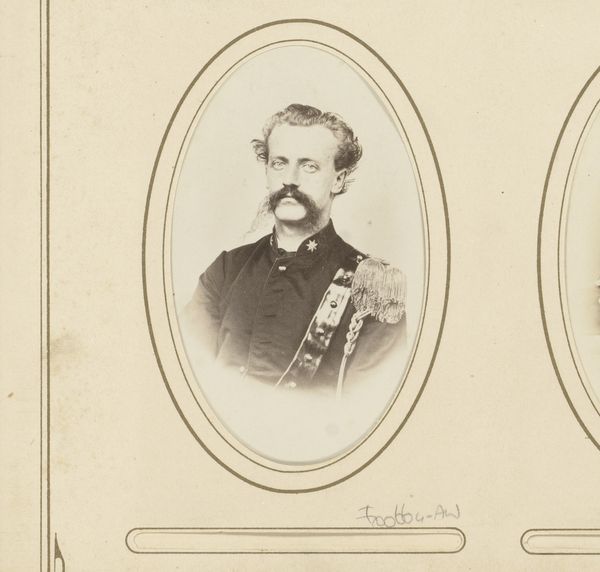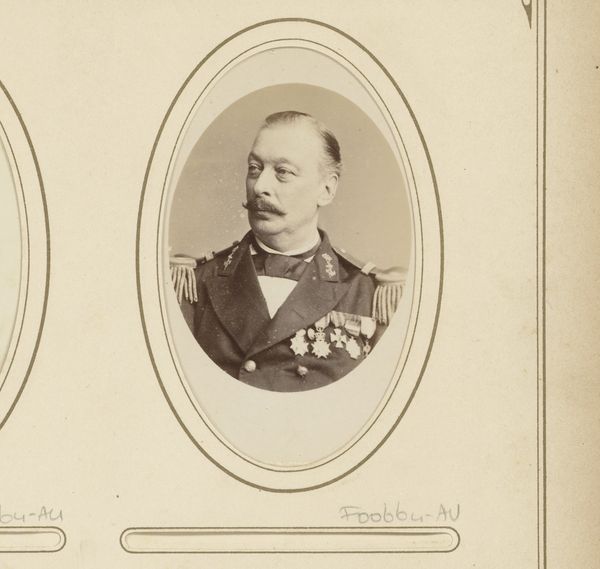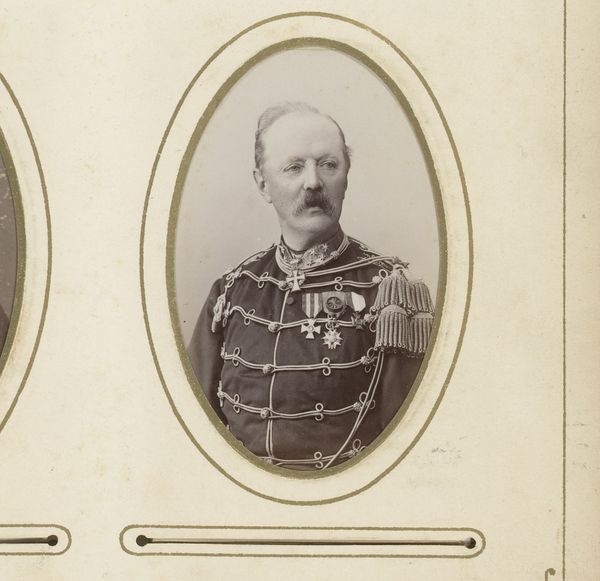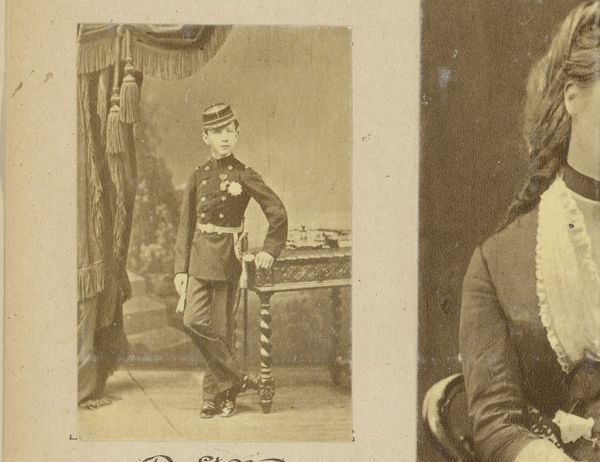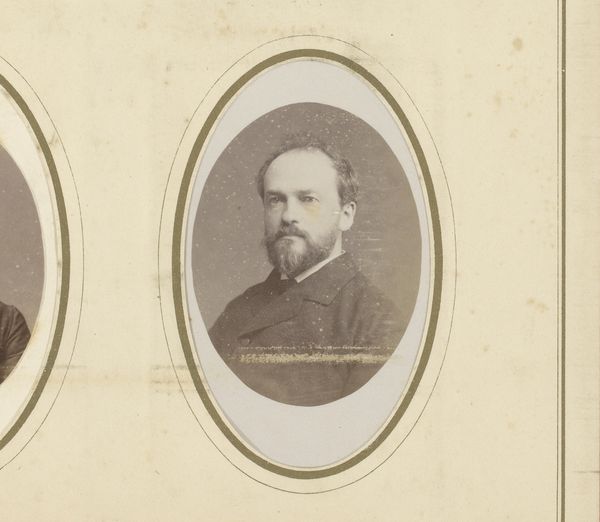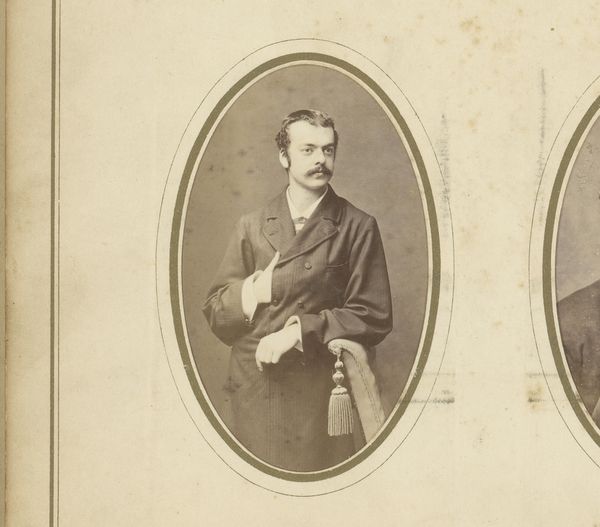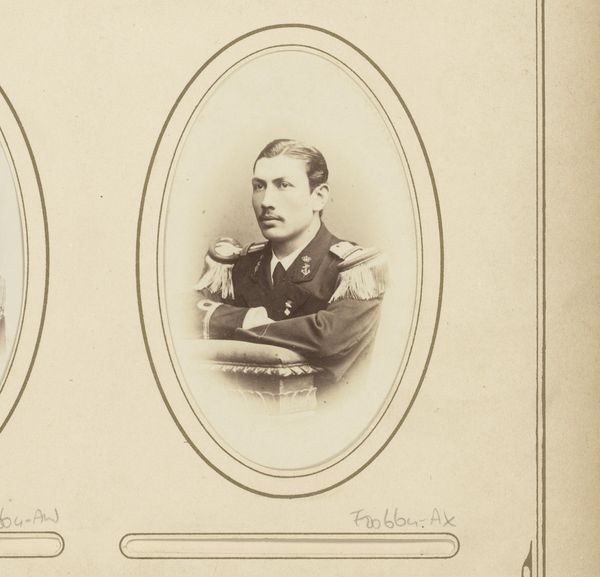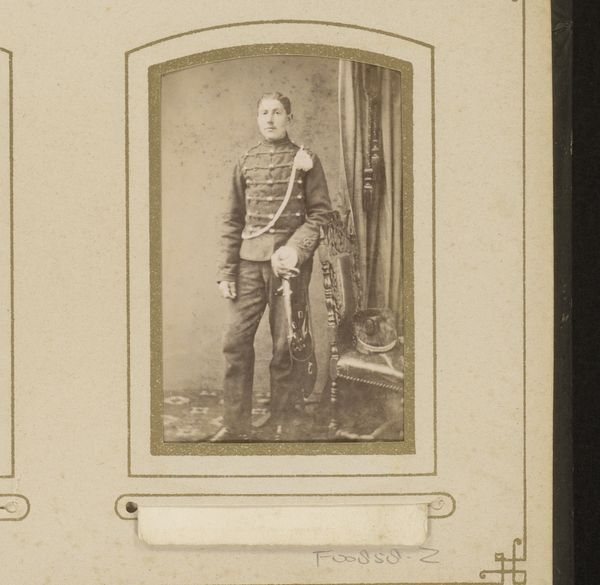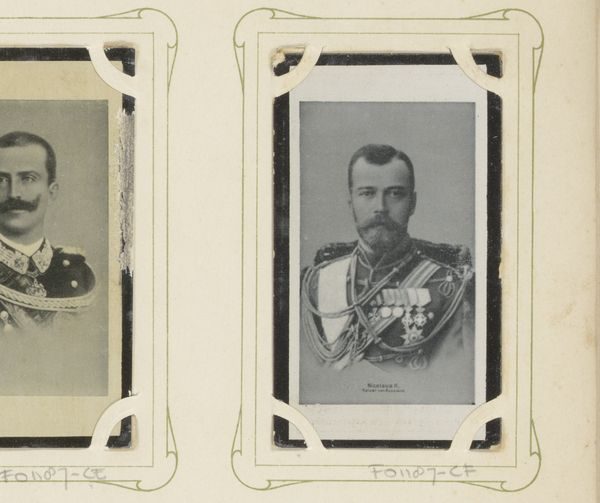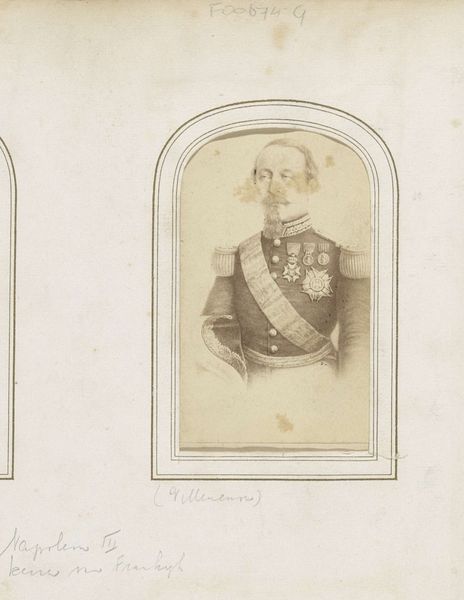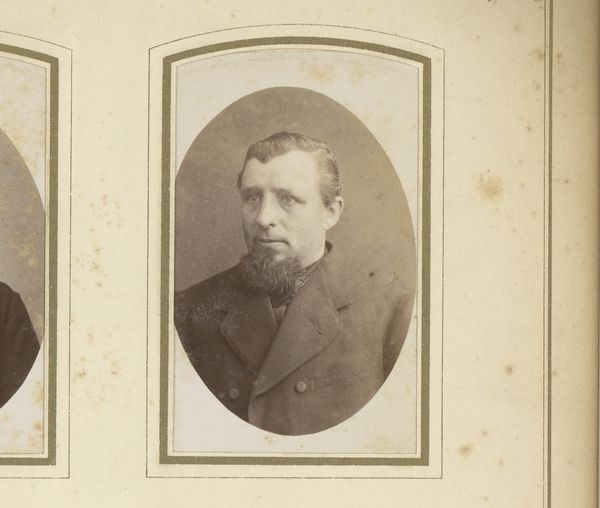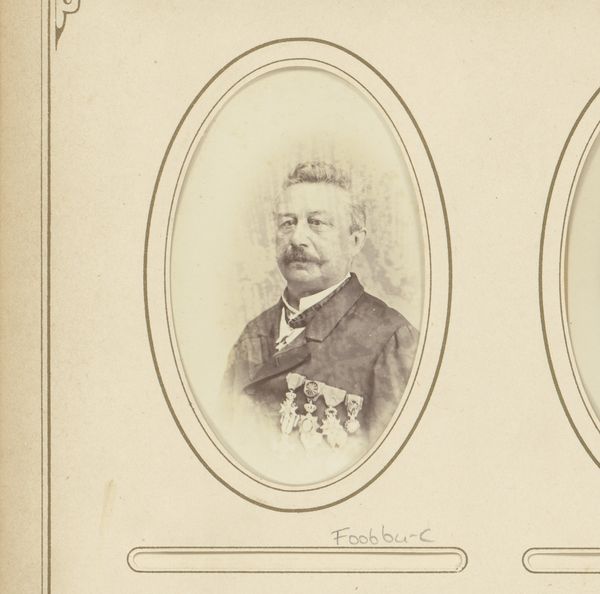
photography
#
portrait
#
photography
#
historical photography
#
19th century
#
realism
Dimensions: height 81 mm, width 49 mm
Copyright: Rijks Museum: Open Domain
Editor: Here we have "Portrait of a Man in Uniform," a photograph by Jacobus Marinus Wilhelmus de Louw, taken sometime between 1873 and 1902. The tight framing and oval vignette give it an intimate, almost classical feel, despite the man’s imposing attire. What strikes you most about this piece? Curator: It is, first and foremost, an essay in lines. Observe how the meticulous arrangement of linear elements—the braids on the uniform, the stripes across his chest, the fine lines etched in the photographic emulsion—construct a rigid framework. Editor: Yes, it does seem meticulously structured. But where does that structure lead us? Curator: Towards an understanding of order, or perhaps more accurately, the aspiration for order. Note the tight, controlled pose of the man, and the formal nature of the framing. Editor: So, the formal elements mirror the social conventions of the time? Curator: Precisely. And let’s not ignore the significance of the medium itself. Photography in the late 19th century carried with it the aura of scientific accuracy, thus lending the subject and its presentation even greater authority. Editor: It’s fascinating how much is communicated through the formal elements, independent of historical context. Curator: Indeed. While biographical information about the subject could illuminate, the photograph already performs the function of representation. The interplay of light and shadow, the carefully controlled texture, all contribute to a structured visual narrative. Editor: Looking closely has certainly opened my eyes to elements I hadn't initially noticed. Curator: Agreed. Visual structures always inform deeper readings.
Comments
No comments
Be the first to comment and join the conversation on the ultimate creative platform.
